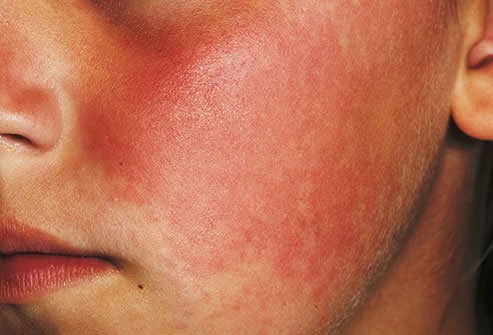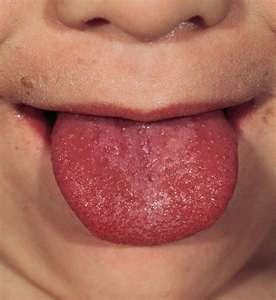Symptoms of strep A infections
Usually, strep A infections only cause minor symptoms. Only in rare cases can a more serious infection develop.
Throat infection
Symptoms and signs of a sore throat include:
- swollen tonsils
- swollen glands in your neck
- a painful, tender feeling at the back of your throat
- discomfort when swallowing
The two most common strep A skin infections are:
- Impetigo – red sores or blisters develop, usually around the nose and mouth or on the arms, trunk or legs. The sores usually burst soon after they appear, leaving thick, golden crusts. The crusts dry to leave a red mark that will usually heal without scarring. Impetigo is not painful, but can make skin feel very itchy.
- Cellulitis – this most commonly affects one of your legs but symptoms can develop in any area of your body. Cellulitis causes the skin to become red, painful, hot, swollen and tender. Blisters may also develop on your skin. You may feel generally unwell, with a high temperature, nausea, shivering and chills.
Inner ear infection
Symptoms of inner ear infection include:
- severe earache
- a high temperature (fever) of 38°C (100.4°F) or above
- flu-like symptoms in children, such as vomiting and a lack of energy
- slight deafness
Sinusitis
Symptoms of sinusitis include:
- a blocked or runny nose
- a throbbing pain in your face, which is often worse when you move your head
- a high temperature
Invasive strep A infections
The symptoms of an invasive strep A infection will depend on what type of infection develops.
- an infection of the lungs (pneumonia) causes persistent coughing, breathing difficulties and chest pain
- an infection of the blood (sepsis) causes high temperature, rapid heartbeat and rapid breathing
- an infection of the protective outer layer of the brain (meningitis) causes a severe headache, vomiting, stiff neck, sensitivity to light and a distinctive blotchy red rash
- scarlet fever – an infection that can affect the whole body, causing a widespread fine pink-red rash
- toxic shock syndrome – a serious, widespread infection of the blood and multiple organs
- necrotising fasciitis – an infection of the deep layer of skin that causes the affected tissue to die (gangrene)
Symptoms of strep B infections
Strep B infection usually only affects newborn babies, but it can spread quickly and cause serious infections.
The symptoms of a strep B infection in a newborn baby usually develop within the first 12 hours of giving birth. Typical signs in the baby are:
- being floppy and unresponsive
- poor feeding
- grunting when breathing
- irritability
- an unusually high or low temperature
- unusually fast or slow breathing
- an unusually fast or slow heart rate
While much rarer, strep B infections can occasionally develop in adults. These tend to take a similar form to invasive strep A infection, with symptoms depending on where in the body the infection takes place.






.jpg)




